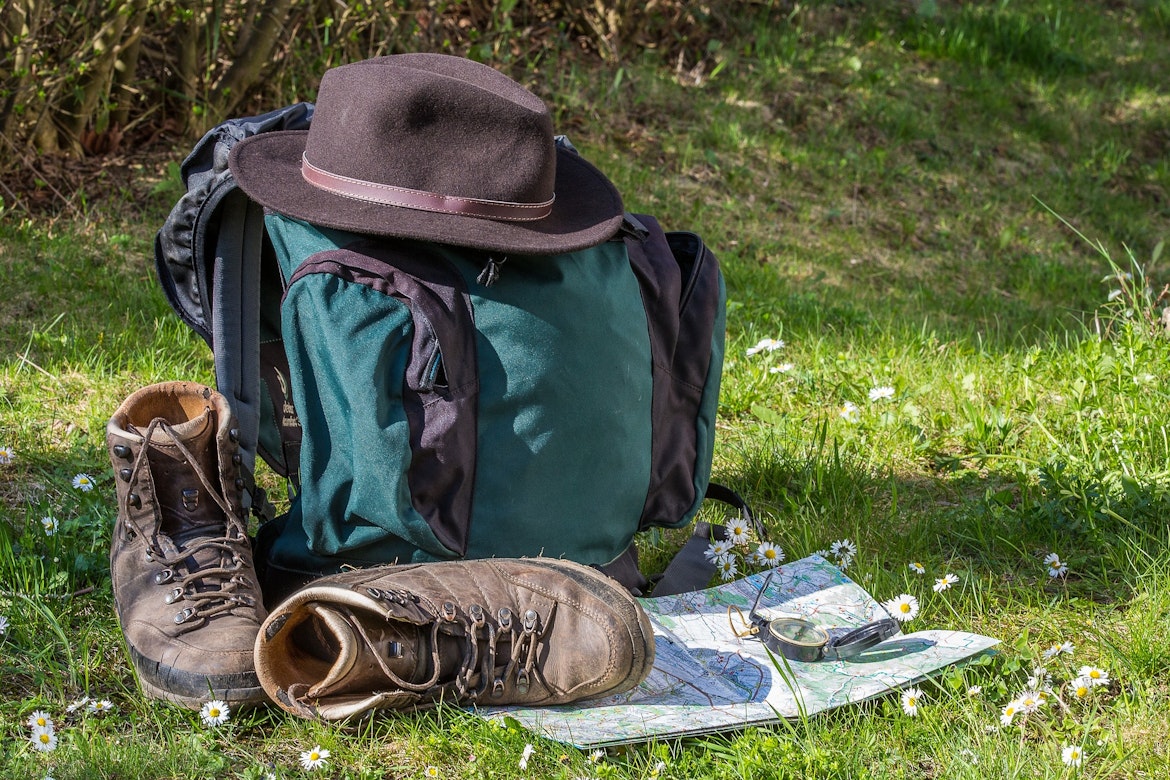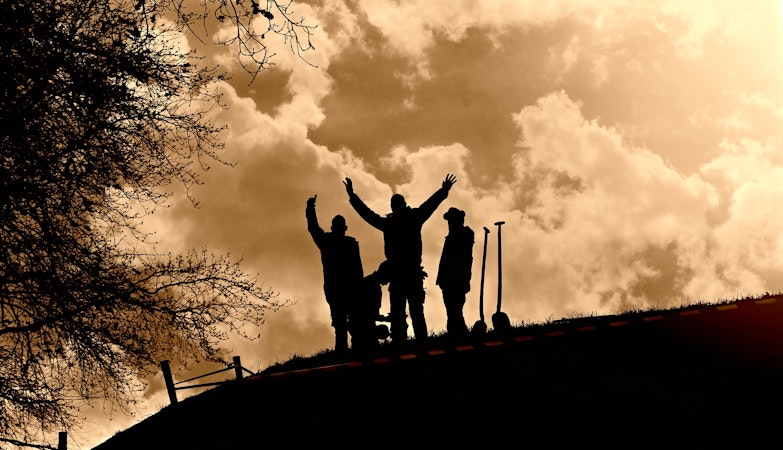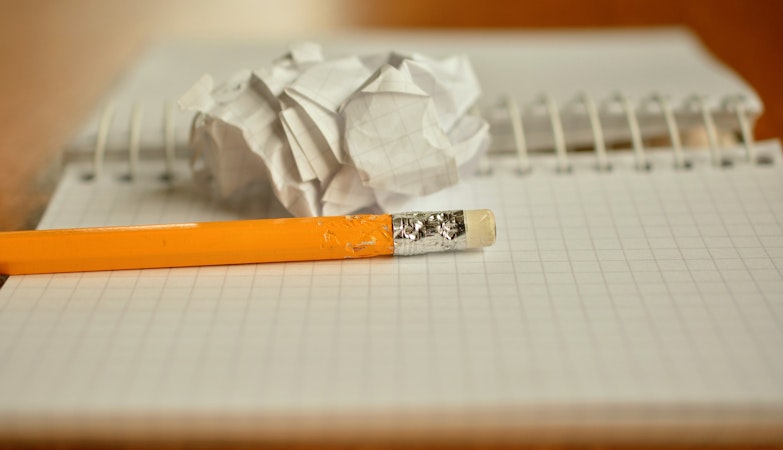While the concept of “everyday carry” goes back to my “Coat Pocket Survival” article from the 1980’s, the available options and the potential emergencies have changed significantly. What passes for “normal” life has become more dangerous, and the potential for more violent situations and even nuclear war are inescapable.
It is usually impractical to carry a full survival kit or pack as we go to our jobs, shopping, or social activities, but the truly prepared citizen must have some essential survival response items on hand at all times. Most disasters strike without warning and may happen when we are far from our home, our survival gear, and our supplies. The concept of everyday carry is to have a few items on-hand that will give you a chance and an advantage.
The survival principle of “It’s not what you have, but what you have with you that counts” applies here. Because of the added complexity of today’s survival threats, and the impending war, I have created three levels of everyday carry.
Everyday Carry Level One
This level is adequate for what we now call “normal” times. The items included are intended to address a variety of natural emergencies such as storms, earthquakes, fires, accidents, and assaults. These items can generally be kept in pockets or a purse without attracting attention or being uncomfortably bulky.
- Pocketknife: Depending on the clothing you wear, this can be a small two-inch blade or a larger three-inch blade. Good “survival folders” come with a seatbelt cutter and a glass breaker for escape and rescue work. Some even include a flashlight and a magnesium fire starter. A knife imparts a major survival advantage in many situations.
- Cell Phone: These still have utility if services are functional. If you live in an urban area, you may want to carry a second, fully charged “throw away phone.” Most carjackers and robbers will want your phone, so give them the throw away and use the other to call 911 after they depart. Even if they get the good, connected phone you can still call 911 on any charged cellphone.
- Mini Flashlight: Do not depend on your cellphone for light. Miniature flashlights could be critical in a blackout or smoke-filled building. They can even be attached to your key ring.
- Whistle: A loud whistle can attract the attention of rescuers far better than your voice.
- N95 folding Respirator: Safe air is the first need of survival. When buildings are falling, things are burning, biohazards are in the air, or radioactive fallout begins, these basic respirators will offer some protection. While they do not protect against poison gases or chemicals, they are better than nothing when immediately at hand. Charcoal-impregnated N95 masks provide limited protection against chemical contaminants.
- Fire Starter: While small magnesium fire starter sticks can spark a fire with dry tinder, a flame beats a spark in most cases. A simple butane lighter can get a fire started or provide a bit of light as needed. The torch-like lighters are very effective and safe.
- Bandana: Cloth bandanas can be used as bandage, tourniquet, improvised respirators, and other survival devices.
- Defense Device: Your choice here depends on your environment and lifestyle. Any kind of loaded firearm around children is an invitation to disaster. Safety first, but if this is not an issue a sub-compact firearm is certainly an everyday carry need in many locations. Taser and pepper spray devices are better than nothing but are seldom effective when you’re surprised by one or more assailants.
Everyday Carry Level Two
This level brings a significantly higher level of daily preparedness to confront violent and prolonged threats that might develop during wartime. These items can help you cope with civil disorder; organized assaults; chemical, biological, and nuclear hazards; and the necessity to flee through high threat environments.
Items can be distributed in pockets, pouches, or a vest without attracting much attention or being too bulky for everyday activities. In addition to the N95 mask, whistle, cell phone and bandana, the following items are added.
- Multi-tool: You can replace the knife or have this in addition to your knife. These tools enable the owner to improvise, repair, and escape. They come in a wide variety of sizes and tool combinations. The bigger the better.
- Rain Poncho: A small plastic rain poncho can provide protection against wind, rain, and airborne contaminants. Just staying dry can prevent hypothermia. Keeping chemicals and fallout off the skin can be critical. Not as good as a full body covering, but a big advantage over nothing.
- Tourniquet Device: At this threat level, there is a serious chance of major injury. All police and military personnel now carry tourniquets. These come with a handy belt or ancle pouch.
- Hand sanitizer: A small bottle of alcohol-based hand sanitizer can be used to help start a fire, clean off contaminants, and sanitize wounds.
- Water purifier: Hydration is critical, but you may need to use questionable sources. Having a few water purification tablets can provide some protection. They also make water safer for flushing and cleaning wounds.
- Larger flashlight: A larger, five- to ten-LED flashlight is advisable. Some come with adjustable beams and colors.
- Firearm: At this level, always carrying a firearm is just common sense. There are plenty of compact handguns with six- to ten-round magazine capacities. Carrying at least one extra magazine is advisable.
Everyday Carry Level Three
At this level, the items are intended to help survive when actual warzone conditions develop. Such conditions could include shootings, explosions, fires, interruption of water and food, rampant civil disorder, ad-hoc medical services, and even radioactive fallout. These items are intended to provide immediate and basic needs to facilitate survival, escape, or evacuation in a worst-case scenario.
Short of carrying a full survival pack and dressing like a combatant, a butt pack or a shoulder pack will probably not attract undue attention under these conditions. In addition to the aforementioned whistle, N95 mask, bandana, and cell phone, the following additions and upgrades create the level three everyday carry list.
- Heavy duty poncho: A larger vinyl poncho that is more durable and effective will be necessary if you need prolonged protection from the elements and contaminants.
- Rescue Blanket: These aluminized blankets will provide additional protection for you or another person and can offer shelter and warmth for cold weather. They are a must for shock or hypothermia victims.
- Eye protection: Flying debris, dust, and contaminants can endanger your eyesight and introduce infections. Normal glasses are insufficiently protective. A pair of folding goggles will be helpful.
- Energy Bars: A high-stress survival scenario may require prolonged exertion; exhaustion can render you vulnerable. A few energy bars can provide nourishment and comfort.
- Water Bottle: Carrying at least a pint or two of water is worth the burden under these conditions. There are bottles that include a filtration system, or you can carry purification tablets to refill your bottle as needed.
- Multi-band Radio: Small, multi-band radios are available can be tuned to emergency channels, citizens Band, and even pre-established family or group communications networks. This may be your primary information and communication source when cellular systems, commercial radio, and TV networks go down.
- Monocular or Binocular: A small monocular will give you a chance to see trouble before you encounter it. Are those friends, or potential assailants? Is that a safe route? What’s leaking from that rail car? Is he carrying a gun?
- Tactical Flashlight: You will want a heavy-duty, military grade flashlight with at least 2000 lumens of brightness and an adjustable beam. There are plenty of options available.
- Mini-First Aid Kit: In addition to the torniquet, you can add a variety of hemostatic blood stopper dressings, self-adhesive bandages, antibiotic ointments, and pain relivers.
- Firearm(s): At this point, the sight of an armed civilian should not be unusual. A full-sized handgun with at least four extra magazines may be necessary to get you south of a serious situation. Learn how to change magazines under fire. If things get bad enough, carrying a pistol in a holster and/or carrying a rifle or sub-rifle may be considered normal and justified for every day.
Conclusion
You can add or combine items as needed to create an everyday carry system that meets your needs and environment. The key to survival is having what you need, where you need it, when you need it. Everyday carry means every day and all the time, starting now. If you only carry some items, sometimes, Murphys law will get you.










I see the site copywrite has not been updated since 2022. Is this still an active, viable, heavily subscribed (membership) group? I’d be inclined to consider membership and be a contributor if this is a dynamic organization.
Hi W, I’ve been going back over some old posts and only just now noted that no one had responded to you! Apologies for that. Only one week ago did our comms get upgraded to a new platform, and I hope no one will fall through a crack like you did. We would love to have you as a member, many of the original founders are looking to retire a bit and have “new blood” come into the site. I’d invite you to consider membership as the document library alone is well worth it. Thanks for the note about the copywrite date that has since been corrected. Cheers!